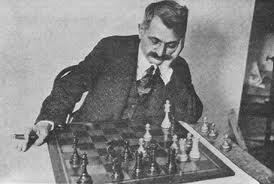
The Truth About Doubled Pawns, Part 2
Last week we started our investigation of the so-called 'weakness' of doubled pawns and I asked my readers to find a position where the mere existence of doubled pawns ruins the position. Many of you guessed correctly that the main drawback of doubled pawns is the loss of their mobility. It can be seen very well if you compare the next two positions:
In this position we see a regular pawn majority which inevitably will lead to a passed pawn. Now look at the next position:
In the second position White cannot create a passed pawn. All Black needs to do is to put their pawns on f6,g7 and h6 (or f5, g6 and h5) and then do nothing.
Since White cannot create a passed pawn, his pawn majority is useless. This little detail might look very minor, but in some endgames it could be desisive. Let's take a look at the exchange variation of the Ruy Lopez:
Why would White start trading the pieces virtually from the first moves? Is he trying to make a draw by trading all the pieces? In fact it is just the opposite! If White manages to trade all the pieces Black will have to resign right away since White will use his 'healthy' pawn majority to create a passed pawn and Black won't be able to do the same!
The position above is the 'dream position' White wants to achieve in the Ruy Lopez Exchange. In this pawn endgame White practically has an extra pawn. So, they play exactly the same way they would play an endgame with an extra pawn: first they use their pawn majority to create a passed pawn and then use the passed pawn to win the game!
The next game played in the World Championship match is a textbook example:
Here is one more Lasker game from another World Championship:
When I saw these games for the first time I was truly shocked. I couldn't believe that the refutation of the Ruy Lopez was so simple: just play the Exchange variation, trade all the pieces and win the resulting endgame. Even more shocking was the fact that people were still playing this 'dubious' opening! I was way too young at that point to realize that if the current World Champion (it was Anatoly Karpov then) plays the Ruy Lopez then it means that probably it is not that simple. Of course as I got older and stronger I discovered a whole bunch of games where Black was successfully fighting back in the Ruy Lopez exchange endgame. By playing 4.Bxc6 White doubles Black pawns, but in return his opponent gets two strong Bishops that could be really deadly if they are not restricted. Judge for yourself:
The final position where White loses due to a zugzwang (after he runs out of moves with the 'a' pawn) shows the power of the pair of Bishops. Also notice that White's pawn majority on the King's Side was absolutely irrelevant in this game.
The next classical game of Alekhine is more proof that you don't want to mess with the Black Bishops!
The activity of Black's pieces, and particularly his Bishops, doesn't change the fact that the doubled pawns are a major disadvantage in this endgame since they pretty much nullify Black's queenside pawn majority in many cases. So if Black doesn't have some sort of compensation for such doubled pawns in the endgame, then he is practically doomed.
to be continued...



